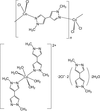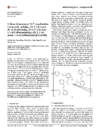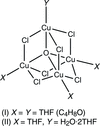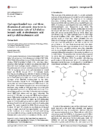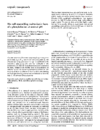issue contents
March 2014 issue

Cover illustration: A space-filling representation of the two-dimensional layer in {[Ni(L)2(bpy)(H2O)2]·H2O}n (L is 4-{[(1-phenyl-1H-tetrazol-5-yl)sulfanyl]methyl}benzoate and bpy is 4,4'-bipyridine), constructed via interchain hydrogen bonds and C-H
![[pi]](/logos/entities/pi_rmgif.gif) interactions. Different chains are shown in different colours. See Geng, Zhang, Wang, Zhang & Sun [Acta Cryst. (2014), C70, 267-271].
interactions. Different chains are shown in different colours. See Geng, Zhang, Wang, Zhang & Sun [Acta Cryst. (2014), C70, 267-271].
research papers


inorganic compounds


metal-organic compounds
























organic compounds














 journal menu
journal menu















